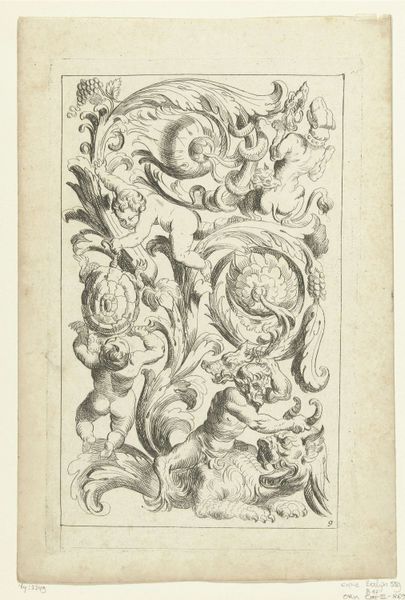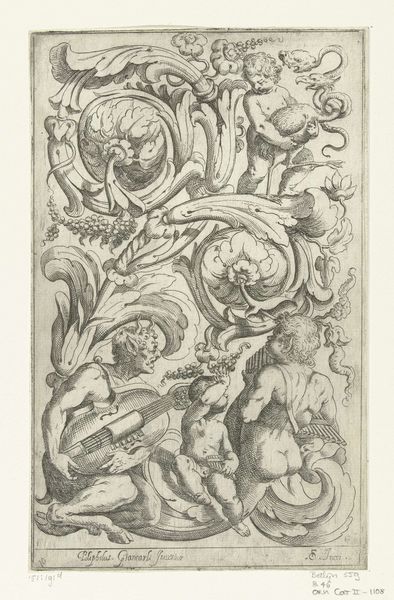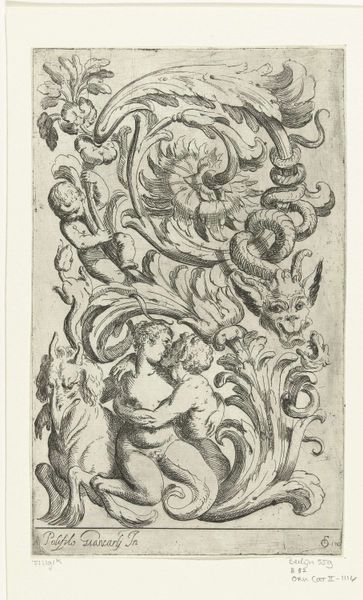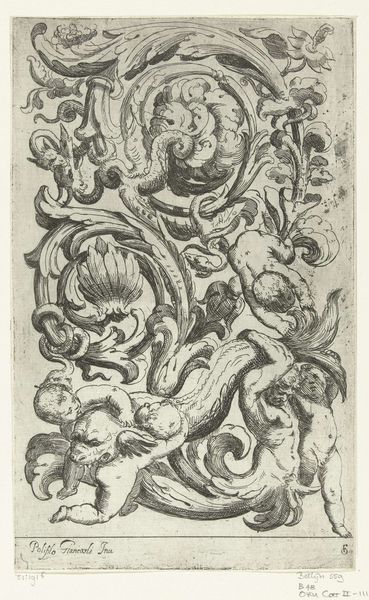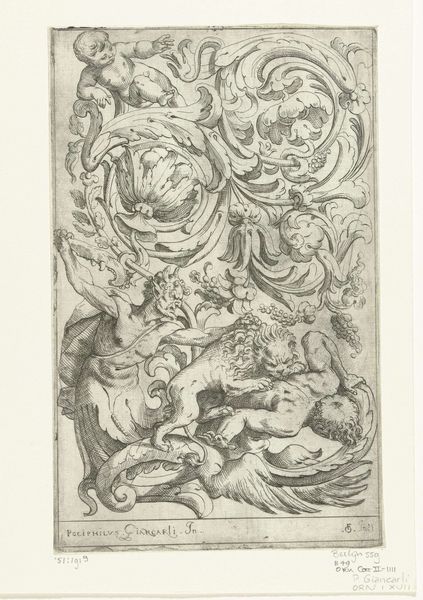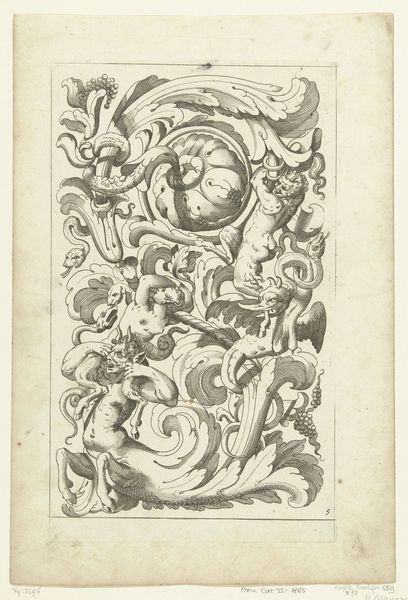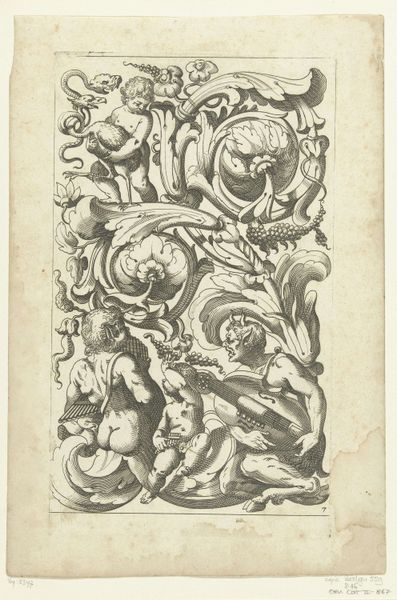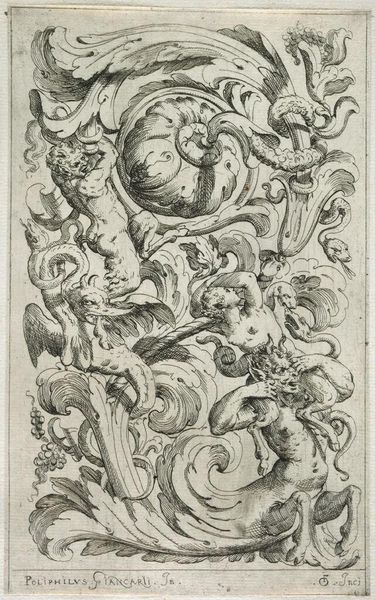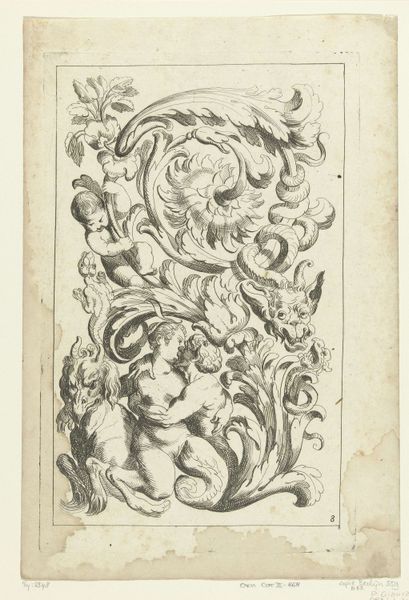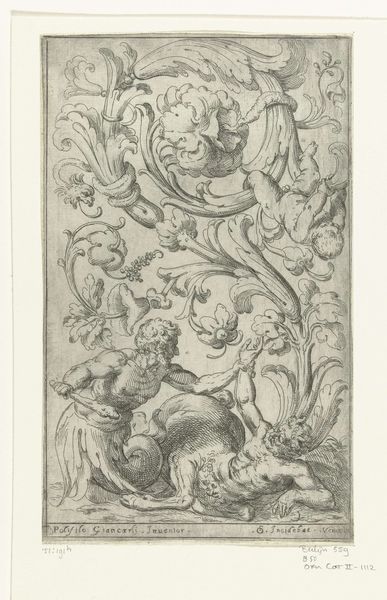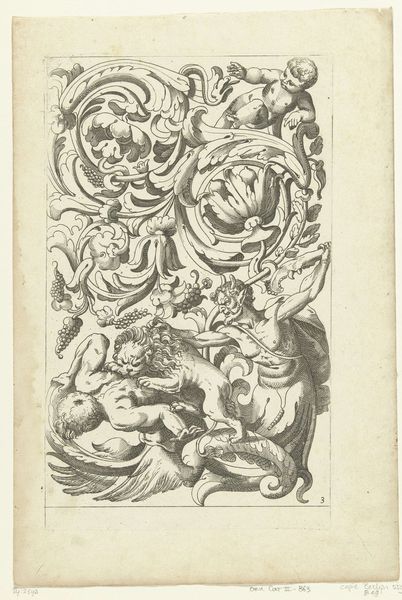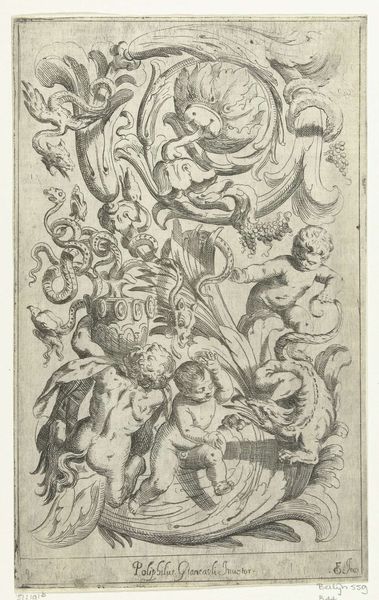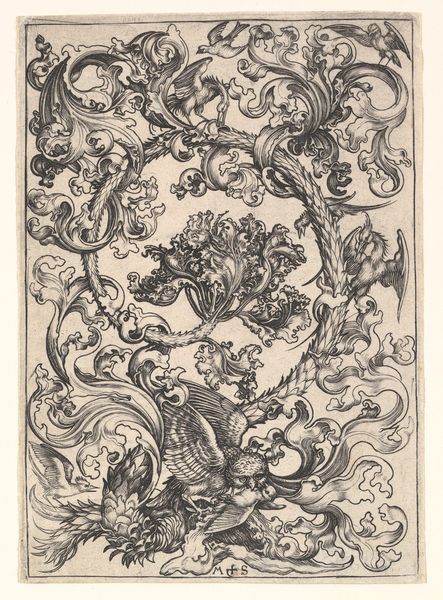
print, engraving
#
allegory
#
baroque
#
pen drawing
# print
#
pen illustration
#
pen sketch
#
figuration
#
ink line art
#
line
#
engraving
Dimensions: height 239 mm, width 149 mm
Copyright: Rijks Museum: Open Domain
Odoardo Fialetti created this engraving, "Sater wiens lichaam uitloopt in een bladrank", which translates to "Satyr whose body extends into a leaf tendril", sometime between 1573 and 1638. It’s a study in the grotesque, a popular aesthetic in the early modern period, and it reflects the blending of classical mythology with the burgeoning scientific interest in the natural world. The image presents a riot of hybrid forms – part human, part animal, part plant – all intertwined within a decorative framework. Produced in Italy, likely Venice, this print comes out of a culture deeply invested in the traditions of classical antiquity. The grotesque was a revival of ancient Roman decorative styles, popularized during the Renaissance. This aesthetic was often used to adorn palaces and public buildings, reflecting the values of the ruling classes. As an art historian, I see this print as a product of its time, reflecting the complex interplay of classical ideals, natural philosophy, and social display. By studying the artist's sources, the print's reception, and the broader cultural context, we can gain a deeper understanding of its meaning and significance.
Comments
No comments
Be the first to comment and join the conversation on the ultimate creative platform.
